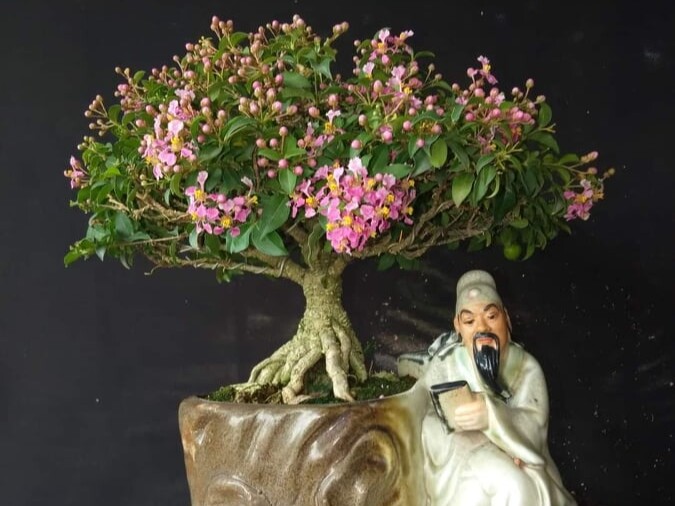The most striking feature of this plant is its roots, which are partially above ground. The roots of the Rhynchotheca capitata can twist and wrap around rocks, creating unique and intriguing shapes. For this reason, older, more established trees are highly valued.

The Rhynchotheca capitata blooms year-round, but its flowers are at their most vibrant in spring. The blooms appear in clusters of 3-5 delicate pink flowers, lasting for around 7-10 days. Not only are they visually appealing, but these flowers also emit a gentle, soothing fragrance, often used for scenting tea.
In addition to its beautiful flowers, the Rhynchotheca capitata also bears attractive, edible fruit. These small, round fruits ripen to a bright red color and are packed with nutrients, especially vitamin C. Research has shown that the fruit of this tree contains 32 times more vitamin C than an equivalent amount of orange juice.
Consuming these fruits can boost your body’s antioxidant levels and immune system, and even help prevent cancer. They also contain melatonin, a hormone that regulates sleep.

In Feng Shui, the Rhynchotheca capitata is believed to symbolize wealth, prosperity, and abundance. Its vibrant, lush appearance, coupled with its ability to bear flowers and fruit, makes it a symbol of smooth sailing and good fortune.
The pink and red hues of its flowers represent happiness and joy. When grown indoors, it is said to bring laughter and harmony to the household.

Planting and Caring for the Rhynchotheca capitata
This ornamental tree can be grown in gardens or potted and shaped into bonsai for decorative purposes in homes, cafes, and outdoor spaces. Propagating the Rhynchotheca capitata is simple and can be done through stem cutting.
Choose a semi-hardwood stem, cut it at an angle about 15cm from the tip, and remove most of the leaves. Then, dip the cutting into a well-draining, nutrient-rich growing medium. Before long, the cutting will take root and produce new shoots. Once you observe a healthy amount of white roots, repot the young plant.

While the Rhynchotheca capitata is relatively low-maintenance, there are some factors to consider if you want your tree to thrive and bloom abundantly:
– Soil: Opt for a well-drained, airy soil mix. You can create your own by mixing garden soil with coconut coir, rice husks, compost, or organic fertilizer.
– Light: The Rhynchotheca capitata thrives in bright, sunny conditions. If growing indoors, ensure it receives ample natural light. Place it outdoors in the sun 2-3 times a week to promote photosynthesis. However, during intense summer heat, provide shade to prevent leaf scorch.

– Watering: This tree is drought tolerant and only requires watering once a week.
– Fertilizer: Provide regular nourishment with weekly or monthly applications of fertilizer, depending on the type. If you wish to induce fruiting, fertilize 30-40 days in advance.
– Pruning: To maintain the desired shape, prune regularly. Remove old, excess, or diseased leaves and branches.














